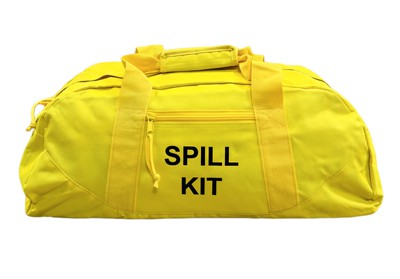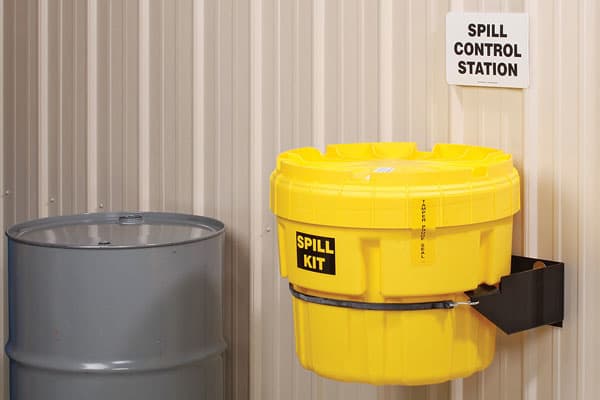Mercury, a toxic heavy metal, is still found in many healthcare facilities despite efforts to phase it out. Whether it’s in thermometers, blood pressure devices, or other medical equipment, mercury poses significant health risks when spilled. For healthcare facilities, having proper safety equipment, specifically mercury spill kits, is crucial to ensure the safety of both patients and staff.
In this article, we will explore the importance of mercury spill kits for healthcare facilities, how they work, and what to look for when selecting a kit.

The Importance of Mercury Spill Kits
Why Mercury is Dangerous
Mercury exposure can lead to serious health issues. When mercury is spilled, it can evaporate and form toxic vapors that are easily inhaled. This exposure can affect the nervous system, kidneys, and lungs. For vulnerable populations such as children, pregnant women, and individuals with compromised health, the risks are even higher.
Regulatory Requirements
Healthcare facilities are subject to strict regulations regarding mercury disposal and spill management. The Occupational Safety and Health Administration (OSHA) and the Environmental Protection Agency (EPA) have specific guidelines to manage mercury spills safely. Failing to comply with these regulations can result in hefty fines and jeopardize the facility’s accreditation.
Components of a Mercury Spill Kit
Essential Items
A comprehensive mercury spill kit should include:
- Mercury absorbent powder: This powder binds with mercury, making it easier to collect.
- Mercury collection tray: A specialized tray to gather mercury droplets.
- Protective gloves: To prevent direct contact with mercury.
- Face mask and goggles: To protect from inhaling vapors and from splashes.
- Disposal bags and containers: For safe disposal of mercury and contaminated materials.
- Instruction manual: Detailed steps on how to handle a mercury spill safely.
Optional Additions
Some kits may also include:
- Mercury vapor suppressant: To reduce the amount of mercury vapor released during cleanup.
- Mercury indicator: To detect invisible mercury vapor in the air.
- Spill containment barriers: To prevent mercury from spreading to other areas.
How to Use a Mercury Spill Kit
Step-by-Step Process
- Evacuate the Area: Ensure that all patients and non-essential personnel leave the immediate area where the spill occurred.
- Ventilate: Open windows and use fans to ventilate the area, reducing mercury vapor concentration.
- Wear Protective Gear: Put on gloves, a face mask, and goggles before approaching the spill.
- Contain the Spill: Use spill containment barriers to prevent mercury from spreading.
- Apply Absorbent Powder: Sprinkle the absorbent powder over the mercury spill to bind the mercury.
- Collect Mercury: Use the mercury collection tray to gather the bound mercury.
- Seal and Dispose: Place all collected mercury and contaminated materials into disposal bags and seal them. Follow the facility’s hazardous waste disposal protocol.
Best Practices for Mercury Spill Management

Training and Preparedness
Regular training sessions should be conducted to ensure that staff members know how to handle mercury spills. Drills can help staff practice the steps and become comfortable with the spill kits.
Regular Kit Inspections
Mercury spill kits should be inspected regularly to ensure that all components are present and in good condition. Replace any used or expired items promptly.
Location and Accessibility
Place mercury spill kits in easily accessible locations throughout the facility. They should be clearly marked and stored in areas where mercury-containing devices are commonly used.
Selecting the Right Mercury Spill Kit
Evaluate Your Needs
Assess the types and quantities of mercury-containing devices in your facility. This will help you determine the size and type of spill kit required.
Quality and Compliance
Ensure that the spill kit meets OSHA and EPA regulations. High-quality kits from reputable suppliers are more likely to comply with safety standards and be effective in mercury spill management.
Cost Considerations
While cost is an important factor, it should not be the sole determinant. Investing in a high-quality spill kit can save money in the long run by preventing health issues and regulatory fines.
Conclusion
Mercury spill kits are an essential part of safety equipment in healthcare facilities. They protect patients and staff from the dangers of mercury exposure and ensure compliance with regulatory requirements. By investing in quality spill kits, providing regular training, and ensuring easy accessibility, healthcare facilities can effectively manage mercury spills and maintain a safe environment.
Remember, the health and safety of your patients and staff are paramount. Don’t wait for an incident to occur; equip your facility with the right mercury spill kits today.
Take Action: Equip Your Facility with the Best Mercury Spill Kits
Don’t compromise the safety of your patients and staff—ensure your healthcare facility is ready for any mercury spill. Visit Absorbents Online today to shop for high-quality, compliant mercury spill kits tailored to your needs. With a wide selection of essential safety equipment and resources, you can protect your environment and meet regulatory requirements with ease. Make the proactive choice for health and safety—order your mercury spill kits now!